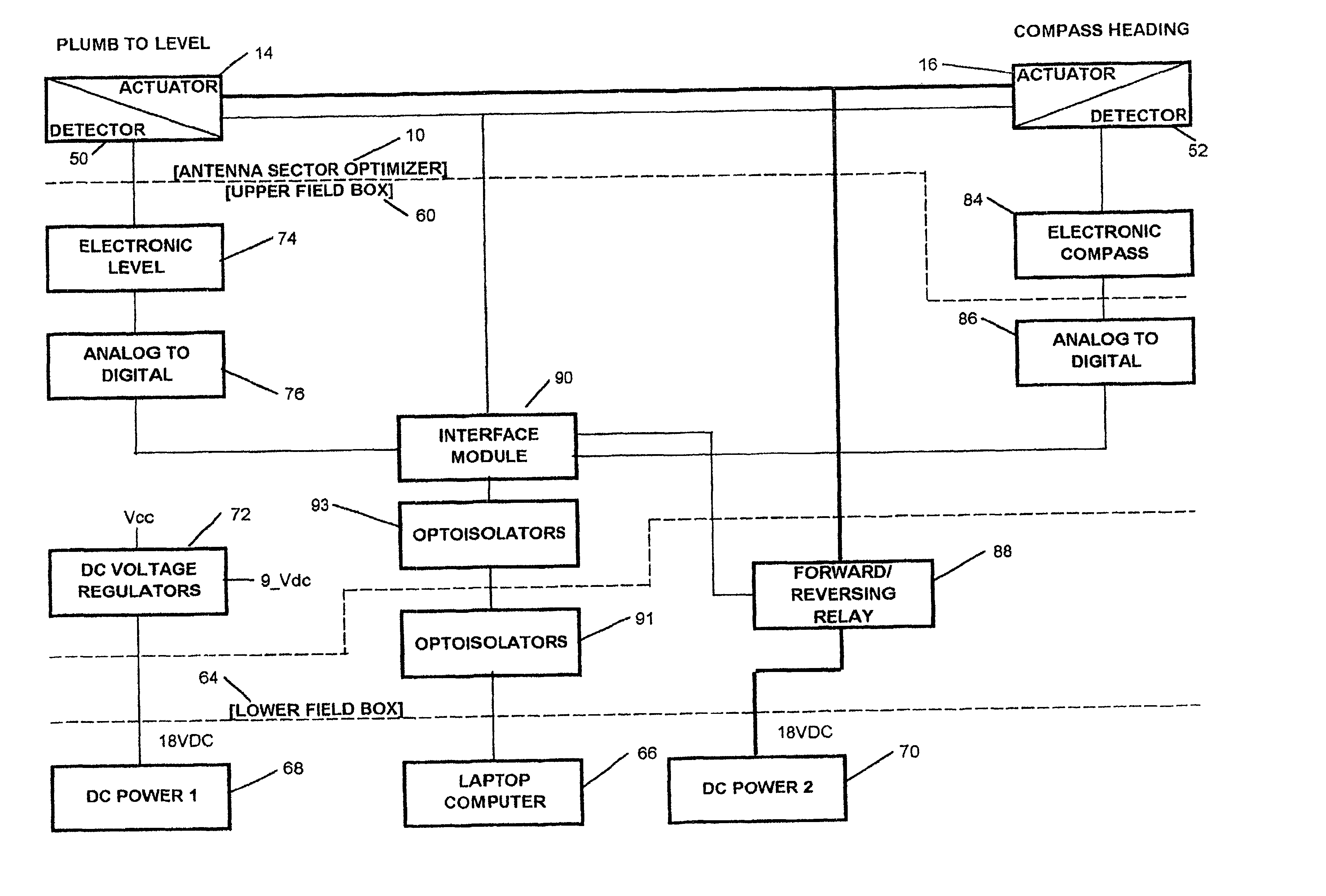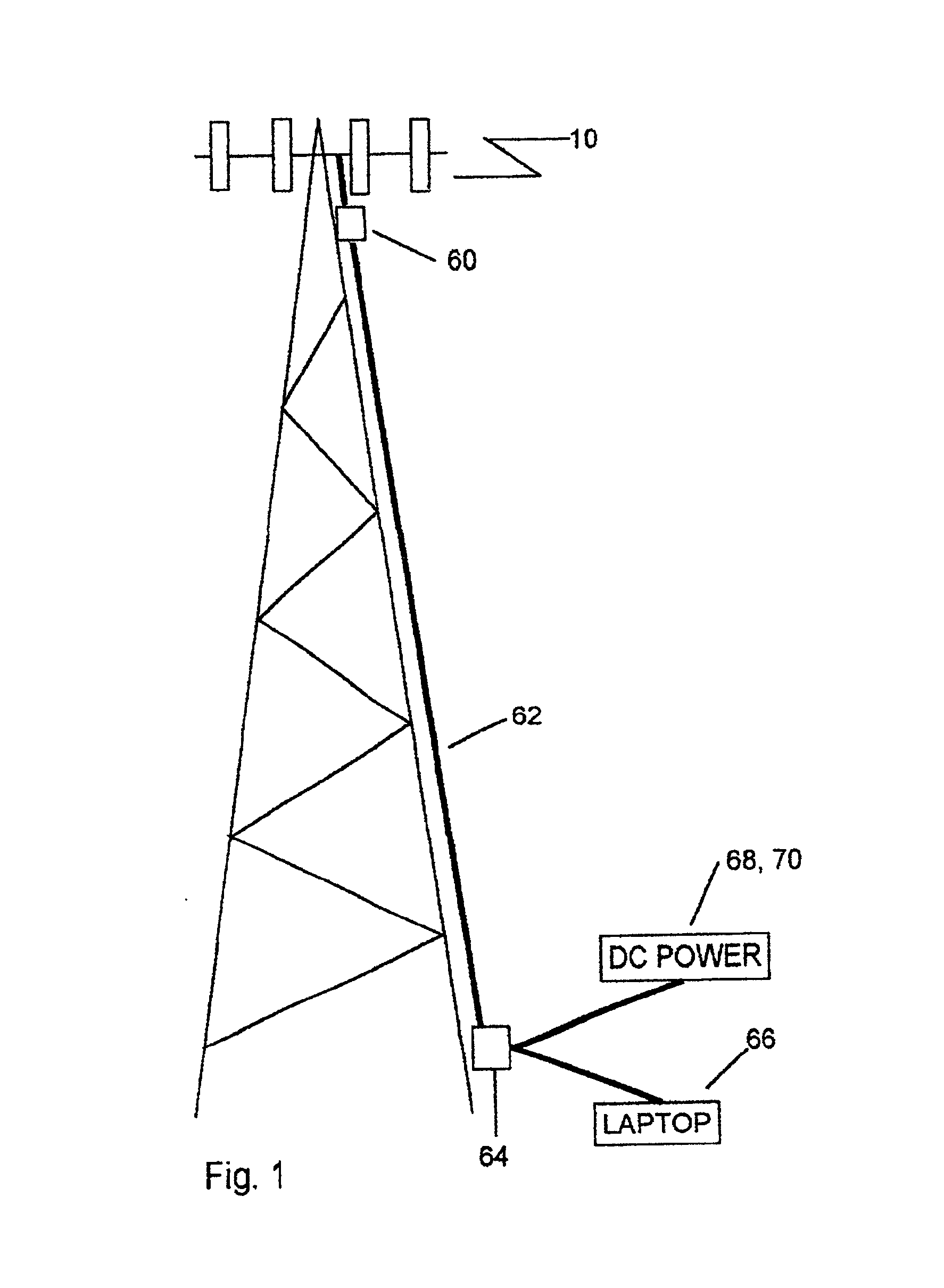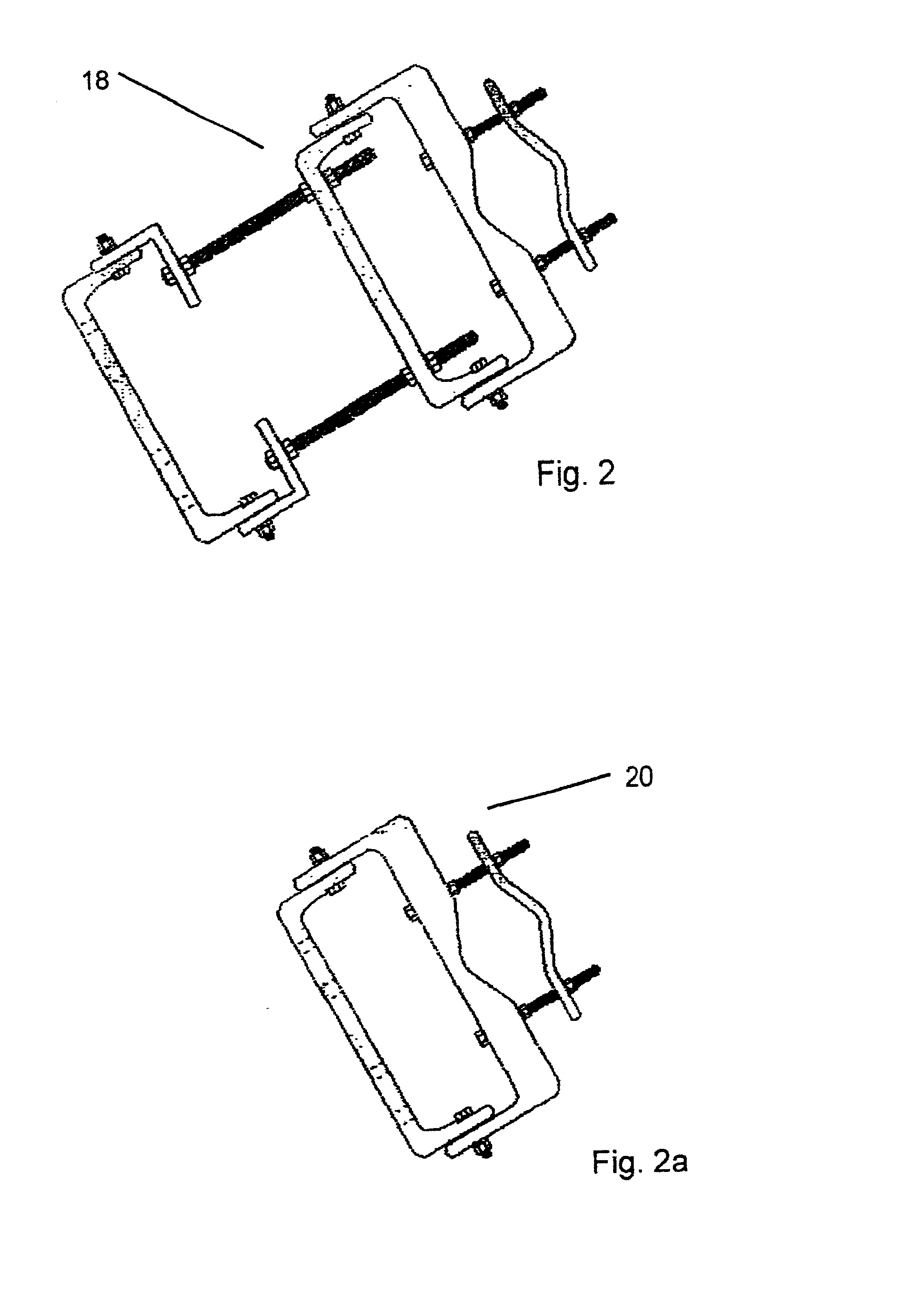System for remotely adjusting antennas
- Summary
- Abstract
- Description
- Claims
- Application Information
AI Technical Summary
Benefits of technology
Problems solved by technology
Method used
Image
Examples
Embodiment Construction
FIG. 1, shows a communications antenna system having, typically, four duplex transmitting and receiving cellular antennas mounted as a sector atop a suitable structure such as, for example, a tower. Furthermore, each cellular system tower may have up to three such sectors, each sector covering a segment that is usually ⅓ of a circle (120°). Referring to FIG. 1, a system for remotely adjusting the P-L and CH of one or a plurality of communication antennas, the subject of this invention is shown comprising: an antenna sector optimizer 10, mounted atop a tower, one or more weatherproof field interconnection boxes 60 and 64, an interconnection cable 62 running between the field boxes, one or more DC power sources 68 and 70, and a laptop computer 66. Although four antennas are shown to represent a sector in FIG. 1, this is not intended to be a limitation in scope, as one or a plurality of antennas may comprise a sector as defined by this invention. It is within the scope of contemplation...
PUM
 Login to View More
Login to View More Abstract
Description
Claims
Application Information
 Login to View More
Login to View More - R&D
- Intellectual Property
- Life Sciences
- Materials
- Tech Scout
- Unparalleled Data Quality
- Higher Quality Content
- 60% Fewer Hallucinations
Browse by: Latest US Patents, China's latest patents, Technical Efficacy Thesaurus, Application Domain, Technology Topic, Popular Technical Reports.
© 2025 PatSnap. All rights reserved.Legal|Privacy policy|Modern Slavery Act Transparency Statement|Sitemap|About US| Contact US: help@patsnap.com



